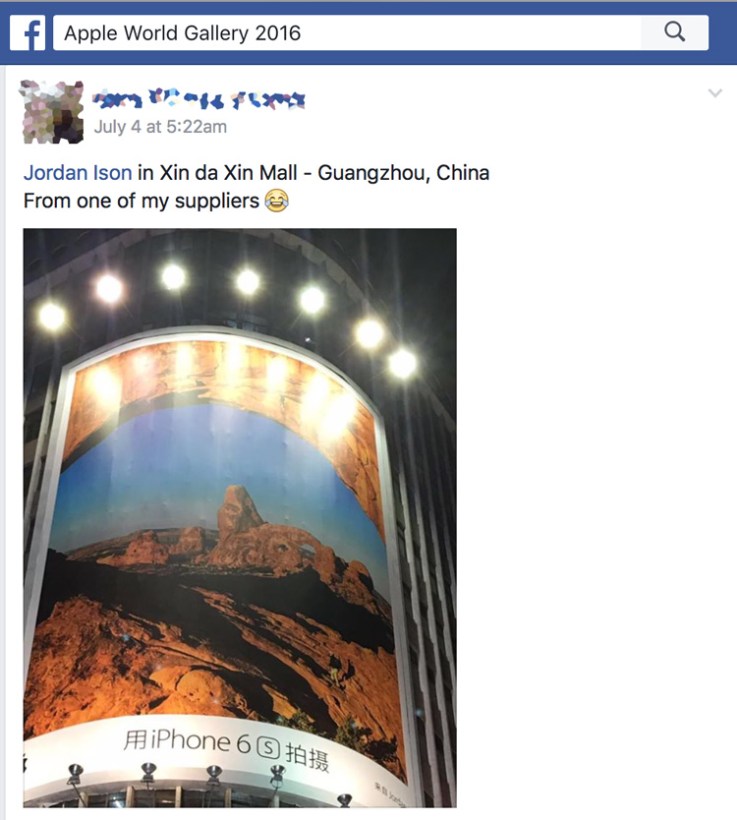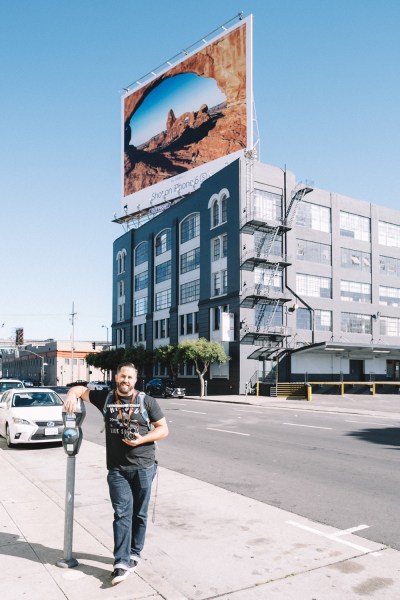
Been near a billboard recently? You’ve probably seen some magnificent photographs with “Shot on iPhone” plastered underneath. As a photographer, you may have felt a pang of envy; why aren’t your photos up there for the world to see?
I tracked down Jordan Ison, one of the photographers featured in Apple’s most recent campaign, to find out how his images came to be featured in the world’s biggest art exhibition.
First contact
“I take a lot of photos and I get a lot of spam related to those photos,” says Ison, “but in this case I received two very cryptic emails from two different people the same agency. There was something about them that made me reply. I’m glad I did!”
When the budding photographer did reply to the email, the first thing the agency did was to put an incredibly strict NDA in front of him. He signed, meaning he couldn’t talk about anything, to anyone, for any reason; in fact, Ison was hesitant to even name the agency.
“You wouldn’t believe what a sense of secrecy there is,” Ison laughs. “We have a Facebook group for the people who are featured in the 2016 campaign. When people have communication with the agency, they never mention names in the Facebook group. It’s always ‘my contact’ and ‘the agency,’ never names.”
While Ison never told me the name of the agency, it’s public knowledge that the advertising agency in question is TBWA, using their Media Arts Lab sub-brand to reach out to photographers.
Selection process
Ison started his photographic journey when he first bought an iPhone 4.
“I’d never really taken photos before I bought an iPhone,” he says, as he’s fiddling with the camera strap on the Rolleiflex he brought with him to our interview — a very different type of camera than the iPhone. “But as soon as I started taking pictures and posting them on Instagram, it woke a new hobby in me.”
From the start, Ison was tagging his photos on Instagram, including the#shotoniphone hashtag. That was the beginning of a habit that would eventually land his photographs on billboards all over the world.
The agency contacted potential participants in the Shot on iPhone campaign with a very simple message. “My client wants to use your photograph for something they are doing,” the emails read, cryptically. The project only had a codename — which Ison declined to share with me, which seems straight out of a spy movie to me.
“The process was interesting. They gave me nothing to go off of. They didn’t say it was the Shot on iPhone campaign until the very end,” he shrugs.
“They actually wanted to talk to me about a different photo at first,” Ison says, showing me a gorgeous shot of the Bonneville Salt Flats on his phone, “but they also asked me if I had any other shots they could take a look at. I sent them half a dozen shots, and in the end that was lucky: They went with another photo than the one they had found.”
Jumping through hoops
“For each photo I submitted, the agency wanted a comprehensive questionnaire filled in. They wanted to know the circumstances for why I decided to take the photo and the story behind it,” Ison told me. “The context for the photos seemed really important to them; they wanted to know the who, why, where and what in depth.”
The agency also asked the photographers to sign a declaration that they owned the copyright to the photographs and that they were willing to let the agency use the photos for commercial purposes. The photographers were paid for the use of the images, but not as much as you might think.

The eye-catching photos can be seen on posters and billboards all over the world. How’s that for an expansive art exhibition!
“I was paid much better than I would normally be paid for a stock image,” Ison says, without wanting to divulge the exact amount.
“Was it around $2,000?” I asked, picking a number out of the air.
“It was less than that,” Ison admits.
“The agency would drop hints, saying they were still selecting and curating the photographs, and would tell me I was still in the running, but also made it clear that nothing would be final until the billboards went up,” says Ison, adding that the four-month process was filled with mystery.
He didn’t find out that his photos had made the final sift until four days before the billboards went up in locations around the world, but knows that his photos have been featured all over the place, including in more than a dozen magazines, smaller billboards all over the world and — the biggest compliment of all — on mural-sized billboards in San Francisco, Minneapolis, Milan, Berlin, Kuala Lumpur, Perth and Guangzhou.
“Being featured in the campaign is both exciting and a bit humbling,” Ison says, but he is realistic about the impact it will have on his photographic career. “I may get more attention from this, but I may not. The important thing to me is that it spurs me on to keep taking photographs. Knowing that my photos are good enough to be used in a campaign like this is really motivating.”
 The photographers in the current Shot on iPhone campaign have tracked each other down on Facebook and are sharing each others’ photographs from buildings around the world. In this case, one of the group’s members found Ison’s photo covering the side of a shopping mall in Guangzhou, China.
The photographers in the current Shot on iPhone campaign have tracked each other down on Facebook and are sharing each others’ photographs from buildings around the world. In this case, one of the group’s members found Ison’s photo covering the side of a shopping mall in Guangzhou, China.How to get featured in a Shot on iPhone campaign
Want your photo to be the next to be lit up, featured, the size of the side of a building, in countries all around the world?
There’s no magic bullet for getting picked, but here are five tips that should increase the chances of your photos floating to the top of the pile:
- Shoot on the most recent iPhone Apple makes. It doesn’t matter if you take an awesome shot with an iPhone 5 — they’ll only want to promote the most recent model iPhone.
- Tag your photos diligently on Instagram and make sure the rest of your Instagram feed is high quality, as well. Tagging with #shotoniphone and#shotoniphone6s is a good idea, but resist the temptation to spam your images with tons of hashtags.
- Keep the original files. Apple will verify that the photo was really taken by you and that it was definitely taken on the phone you claim you used; in this case, an iPhone 6s.
- Make it easy to find your contact details. The agency will have thousands of people to choose from; if you make it hard to email you, they’re not going to bother.
- Keep an eye on your email — you never know when you’ll get the tap on your shoulder!



Comments
Post a Comment